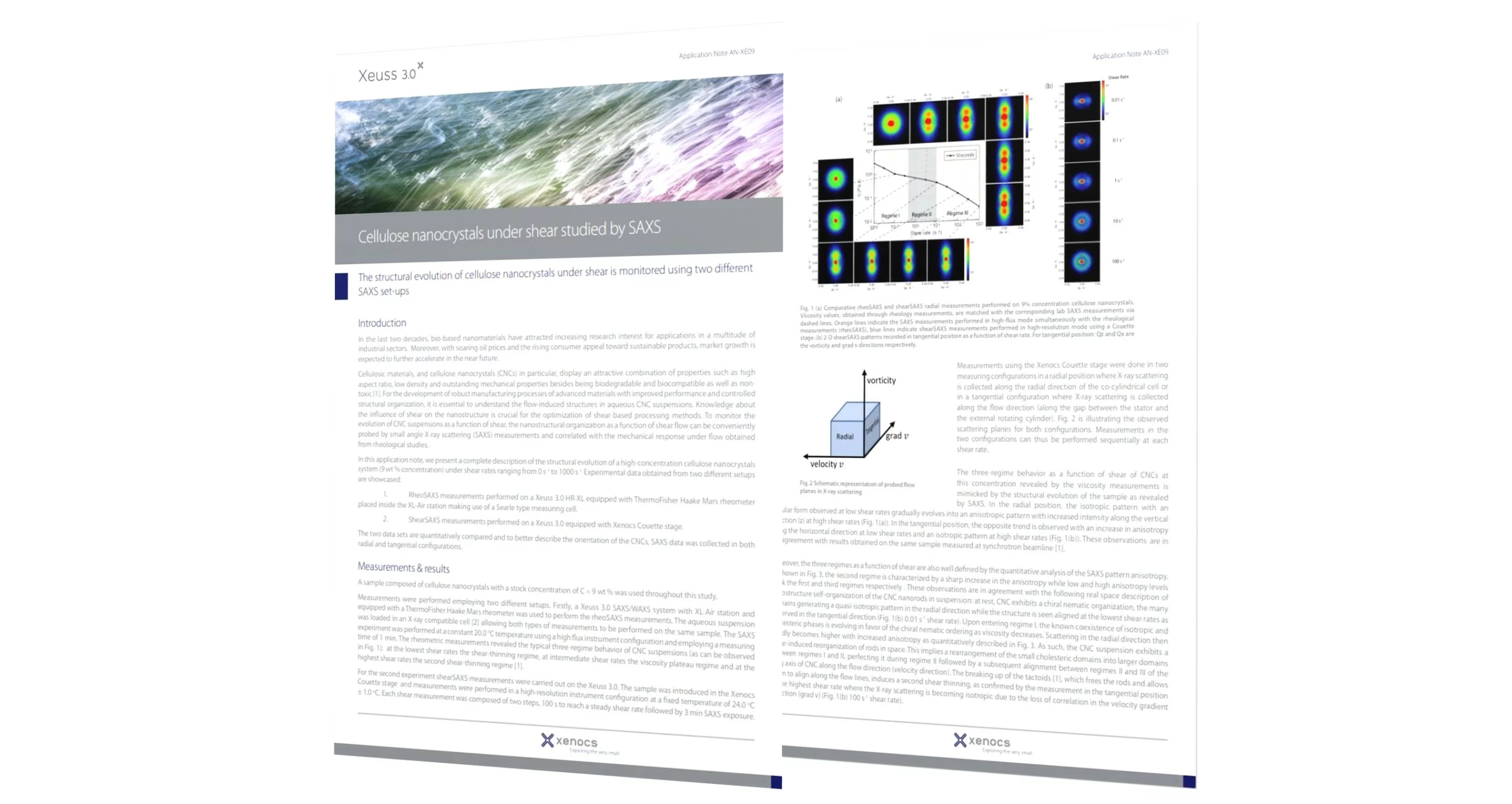The structural evolution of cellulose nanocrystals under shear is monitored using two different SAXS set-ups
In the last two decades, bio-based nanomaterials have attracted increasing research interest for applications in a multitude of industrial sectors. Moreover, with soaring oil prices and the rising consumer appeal toward sustainable products, market growth is expected to further accelerate in the near future.
Cellulosic materials, and cellulose nanocrystals (CNCs) in particular, display an attractive combination of properties such as high aspect ratio, low density and outstanding mechanical properties besides being biodegradable and biocompatible as well as non-toxic [1]. For the development of robust manufacturing processes of advanced materials with improved performance and controlled structural organization, it is essential to understand the flow-induced structures in aqueous CNC suspensions. Knowledge about the influence of shear over the nanostructure is crucial for the optimization of shear-based processing methods. To monitor the evolution of CNC suspensions as a function of shear, the nanostructural organization as a function of shear flow can be conveniently probed by small angle X-ray scattering (SAXS) measurements and correlated with the mechanical response under flow obtained from rheological studies.
In this application note, we present a complete description of the structural evolution of a high-concentration cellulose nanocrystals system (9 wt % concentration) under shear rates ranging from 0 s-1 to 1000 s-1. Experimental data obtained from two different setups are showcased:
- RheoSAXS measurements performed on a Xeuss 3.0 HR-XL equipped with ThermoFisher Haake Mars rheometer placed inside the XL-Air station making use of a Searle type measuring cell.
- ShearSAXS measurements on a Xeuss 3.0 equipped with the Xenocs Couette stage.
The two data sets are quantitatively compared and to better describe the orientation of the CNCs, SAXS data was collected in both radial and tangential configurations.




